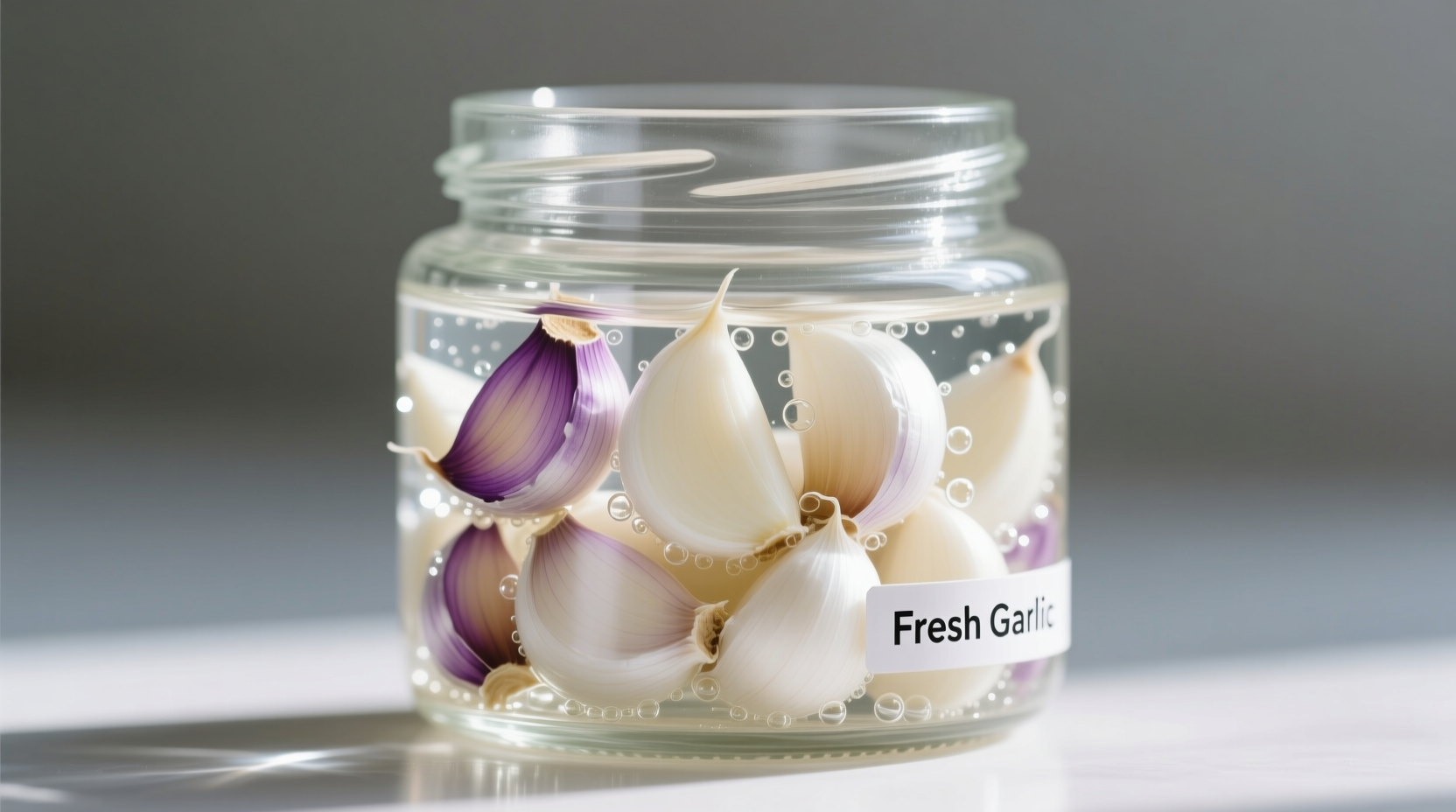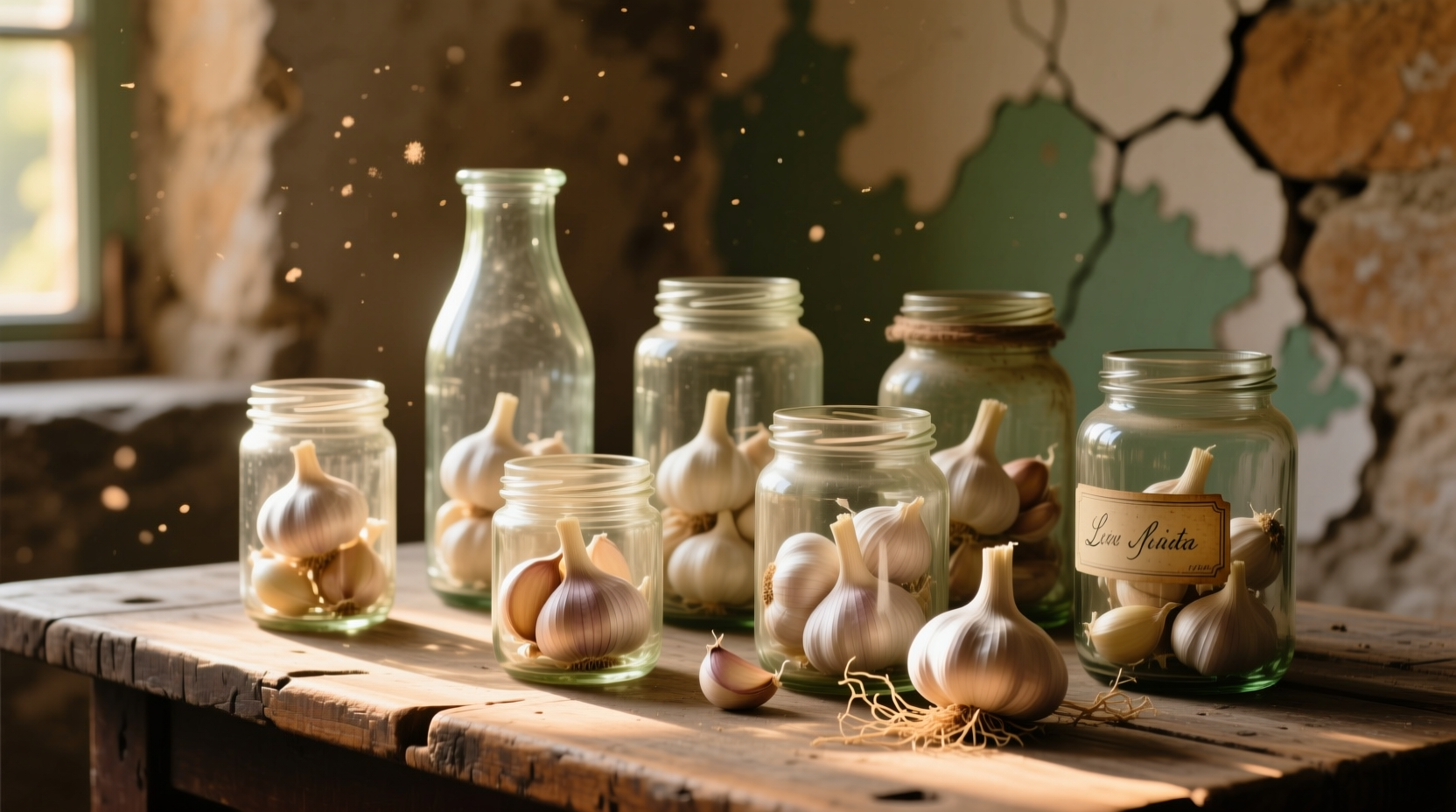The Practical Truth About Jarred Garlic for Home Cooks
When you're standing in the grocery aisle debating between fresh garlic bulbs and those convenient jars, you deserve clear facts. As someone who's tested hundreds of recipes across professional and home kitchens, I've discovered jarred garlic isn't the culinary crime many chefs claim—but it's not a perfect substitute either. Understanding exactly when and how to use it transforms this pantry staple from a flavor compromise into a strategic kitchen asset.
What Exactly Is in That Jar?
Jarred garlic consists of peeled cloves submerged in a preservation liquid, usually a mixture of water, citric acid, and sometimes vinegar or salt. Unlike fresh garlic which contains allicin (the compound responsible for its distinctive flavor and health benefits), jarred versions undergo processing that alters their chemical composition. The cloves maintain their basic garlic identity but lose the volatile compounds that create fresh garlic's complex flavor profile.
| Characteristic | Jarred Garlic | Fresh Garlic |
|---|---|---|
| Shelf Life (unopened) | 18-24 months | 3-6 months |
| Shelf Life (opened) | 4-6 weeks refrigerated | 1-2 weeks |
| Flavor Complexity | Muted, one-dimensional | Bright, complex, varies by variety |
| Preparation Time | Seconds | 5-10 minutes |
| Best Culinary Applications | Long-simmered dishes, marinades | Raw applications, quick sautés, finishing |
When Jarred Garlic Actually Works
Professional kitchens use jarred garlic strategically, not as a blanket replacement. The key is understanding which cooking methods compensate for its flavor limitations:
- Long-simmered sauces and soups - The extended cooking time allows jarred garlic's milder flavor to integrate properly
- Marinades for tougher cuts - Works well when combined with acidic ingredients that help extract remaining flavor compounds
- Emergency situations - When you've run out of fresh but need garlic immediately for cooking
- Consistent flavor requirements - Commercial kitchens needing identical results across multiple batches
According to USDA food safety guidelines, properly stored jarred garlic maintains safety standards throughout its labeled shelf life when unopened. Once opened, refrigeration below 40°F (4°C) prevents bacterial growth in the preservation liquid.
The Flavor Reality: What Science Tells Us
Research from the Journal of Agricultural and Food Chemistry confirms that the preservation process significantly reduces allicin content—the compound responsible for garlic's characteristic pungency and many health benefits. While jarred garlic retains some beneficial compounds, the flavor profile becomes notably flatter.
Food science explains why jarred garlic works better in certain applications: during extended cooking, the remaining sulfur compounds slowly release, creating a more acceptable flavor profile. In quick-cooking applications, these compounds don't have time to develop, resulting in that unpleasant raw, metallic taste many associate with jarred garlic.

Storage Guidelines You Can Trust
Proper storage makes or breaks your jarred garlic experience:
- Unopened jars - Store in a cool, dark pantry away from heat sources (ideal temperature: 50-70°F/10-21°C)
- Opened jars - Always refrigerate with the lid tightly sealed
- Never freeze - Freezing alters texture and creates separation in the preservation liquid
- Check for spoilage - Discard if you notice bubbling, cloudiness, or off odors
The National Center for Home Food Preservation confirms that commercially prepared jarred garlic maintains safety when stored according to manufacturer instructions. Home-preserved garlic in oil carries botulism risks and shouldn't be confused with commercial products.
Recipe Adaptation Techniques
When substituting jarred for fresh garlic, these professional techniques yield better results:
- Boost flavor with acid - Add 1/4 teaspoon lemon juice or vinegar per teaspoon of jarred garlic
- Enhance with umami - Combine with tomato paste or soy sauce to compensate for flavor limitations
- Use more quantity - Increase by 25-50% compared to fresh garlic measurements
- Add early in cooking - Gives more time for flavor development in the dish
- Finish with fresh elements - Sprinkle with fresh herbs to compensate for missing brightness
When to Reach for Fresh Instead
Certain applications simply won't work with jarred garlic. Save your fresh bulbs for:
- Raw applications like aioli, salad dressings, or bruschetta topping
- Quick-cooking dishes like stir-fries or sautéed vegetables
- Recipes where garlic is the star ingredient (like garlic bread)
- Any dish cooking for less than 20 minutes
Professional chefs agree that jarred garlic lacks the volatile compounds necessary for proper flavor development in quick-cooking applications. The American Culinary Federation's research shows that dishes requiring garlic as a primary flavor component consistently score lower in taste tests when using jarred alternatives.
Maximizing Value from Your Jar
Make the most of your jarred garlic investment with these practical tips:
- Always shake the jar before using to redistribute flavor compounds
- Use the preservation liquid in dressings or sauces (it contains dissolved garlic flavor)
- Store opened jars with a thin layer of olive oil on top to prevent oxidation
- Keep jars away from light to prevent flavor degradation
- Buy smaller jars if you use garlic infrequently to ensure freshness
Common Myths Debunked
Let's clear up some persistent misconceptions:
- "Jarred garlic is just as good as fresh" - False. It serves different purposes with distinct flavor profiles
- "It contains harmful preservatives" - Commercial products use only FDA-approved preservation methods
- "You can freeze it to extend shelf life" - Freezing damages texture and flavor compounds
- "All brands taste the same" - Significant quality differences exist between premium and budget options











 浙公网安备
33010002000092号
浙公网安备
33010002000092号 浙B2-20120091-4
浙B2-20120091-4